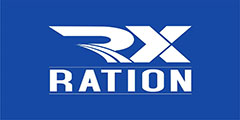
Privacy statement: Your privacy is very important to Us. Our company promises not to disclose your personal information to any external company with out your explicit permission.

Figure 5-30 shows a typical bushing part. The part is made of 45 steel. There is no heat treatment and hardness requirement. The part is subjected to CNC turning technology analysis (single piece and small batch production).
First, the part drawing process analysis
The surface of the part is composed of inner and outer cylindrical surface, inner conical surface, smooth arc, reverse arc and external thread, and many of the diameter and axial dimensions have higher dimensional accuracy and surface roughness requirements. The dimension of the part drawing is complete and meets the requirements of CNC machining dimension marking; the contour description is clear and complete; the part material is 45 steel, the cutting performance is good, no heat treatment and hardness requirements.
Through the above analysis, the following process measures are adopted.
1 The size of the tolerance on the pattern, because the tolerance value is small, so you do not need to take the average value when programming, but take the basic size.
2 left and right end faces are design standards of multiple dimensions. Before the corresponding process, the left and right end faces should be driven out first.
3 The inner hole size is small, and the 镗1:20 taper hole and the 镗φ32 hole and the 150-cone surface need to be turned off.

Figure 5-30 Bearing sleeve parts
Second, choose equipment
According to the shape and material of the parts to be processed, CJK6240 CNC lathe is selected.
Third, determine the positioning of the parts and the way of clamping
1 inner hole processing
Positioning reference: positioning of the outer circle during machining of the inner hole;
Clamping method: Clamp with three-claw automatic centering chuck.
2 outer contour processing
Positioning reference: determine the part axis as the positioning reference;
Clamping method: When processing the outer contour, in order to ensure that all the outer contours are installed and installed at one time, a conical mandrel device (see the double-dotted line portion in Fig. 5-31) is required, and the left end of the mandrel is clamped by a three-jaw chuck. A central hole is left at the right end of the mandrel and is tightened with the tip of the tailstock to increase the rigidity of the process system.
Fourth, determine the processing sequence and feed route
The determination of the processing order is determined by the principle of from inside to outside, from coarse to fine, from near to far, and as many workpiece surfaces are processed as much as possible in one setup. In combination with the structural features of the part, each surface of the inner hole can be machined first, and then the outer contour surface can be machined. Since the part is produced in a single piece and small batch, the path design does not have to consider the shortest feed route or the shortest free travel route. The outer contour surface turning path can be carried out along the contour of the part (see Figure 5-32).
Five, tool selection
Fill the selected tool parameters into the bearing blanks of Table 5-11 for easy programming and operation management. Note: When cutting the outer contour, in order to prevent the secondary flank face from interfering with the surface of the workpiece, a larger secondary declination should be selected and a map inspection can be performed if necessary. In this case, κ = 55 is selected.

Figure 5-31 External contour turning and clamping scheme

Figure 5-32 External contour machining path
Table 5-11 Bearing sleeve CNC machining tool card

Six, cutting amount selection
According to the surface quality requirements, tool materials and workpiece materials, refer to the cutting amount manual or related data to select the cutting speed and feed per revolution, and then calculate the spindle speed and feed rate using the formulas vc=πdn/1000 and vf = nf. (The calculation process is omitted), and the calculation result is filled in the process card of Table 5-15.
The choice of the amount of backing knife varies depending on the thickness and finishing. When roughing, in the case of the rigidity of the process system and the power of the machine tool, take a larger amount of backing knife as much as possible to reduce the number of feeds; when finishing, to ensure the surface roughness of the part, the amount of backing is generally It is more suitable to take 0.1 to 0.4 mm.
Seven, CNC machining process card development
Combine the contents of the previous analysis into the CNC machining process cards shown in Table 5-12.
Table 5-12 Bearing sleeve CNC machining process card

December 25, 2022
December 01, 2022
September 25, 2024
September 24, 2024
この仕入先にメール
December 25, 2022
December 01, 2022
September 25, 2024
September 24, 2024

Privacy statement: Your privacy is very important to Us. Our company promises not to disclose your personal information to any external company with out your explicit permission.

Fill in more information so that we can get in touch with you faster
Privacy statement: Your privacy is very important to Us. Our company promises not to disclose your personal information to any external company with out your explicit permission.